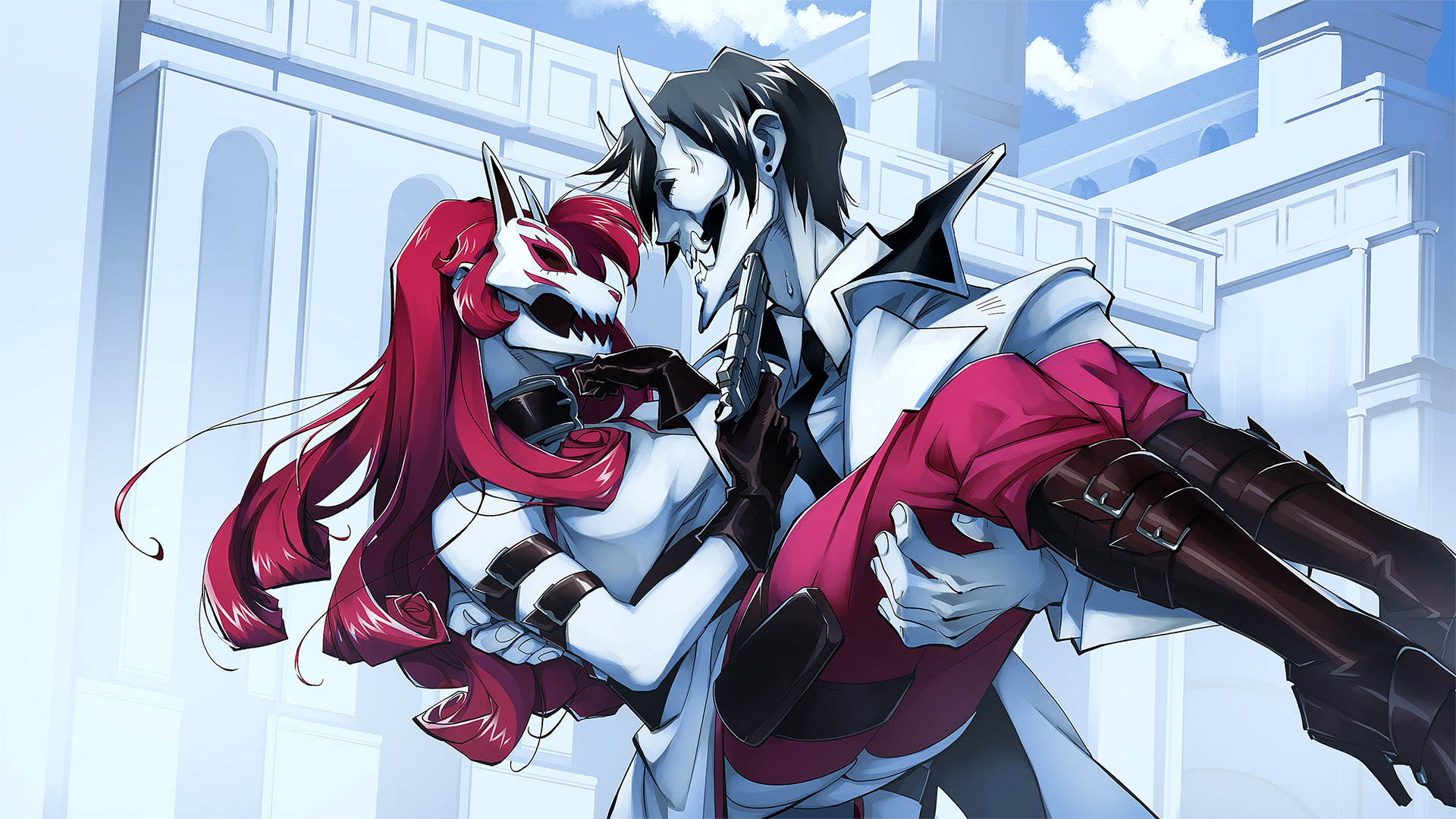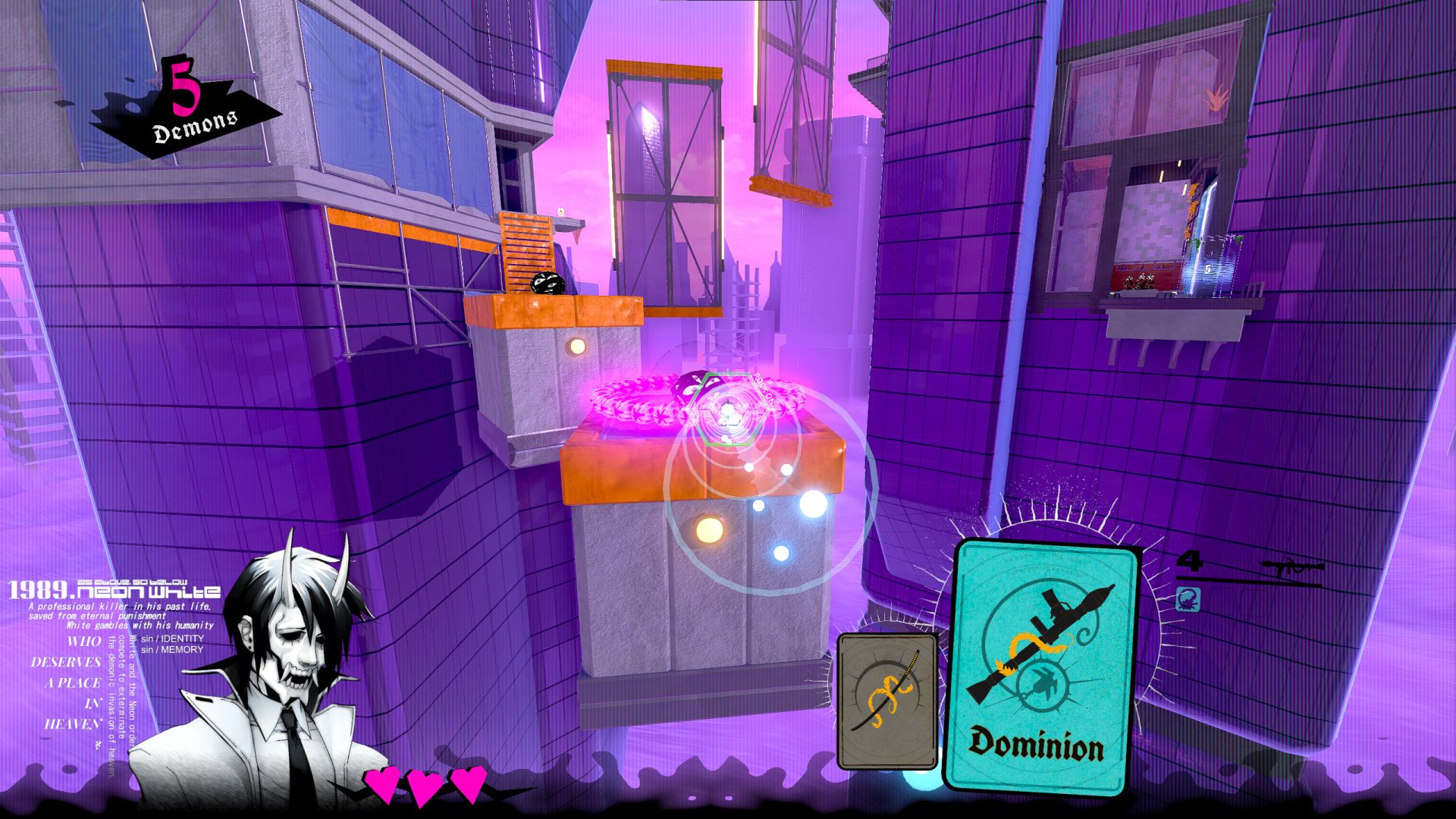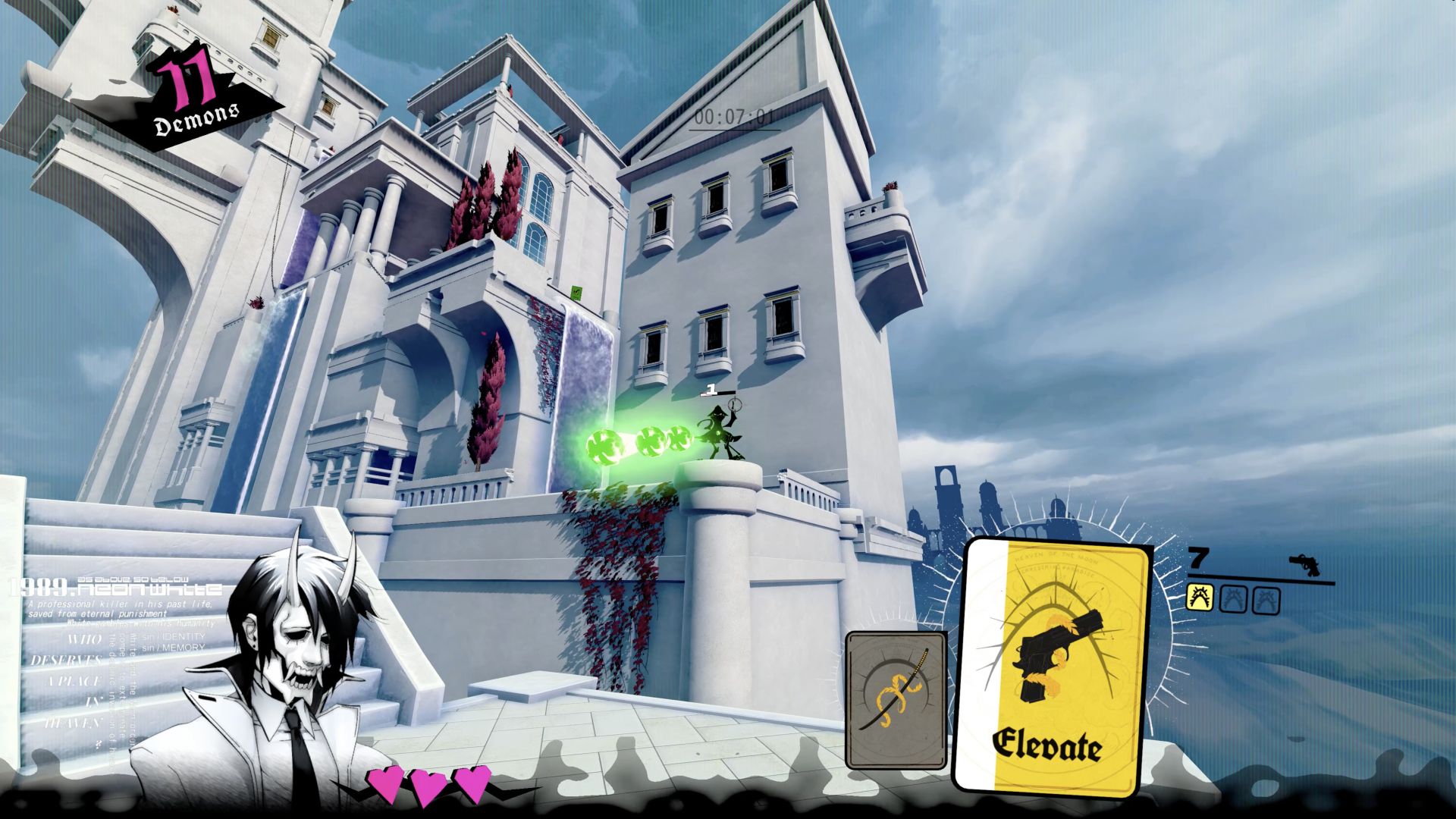Neon White achieved in 60 seconds what Dying Light 2 couldn't in 60 hours
A cumbersome open-world format isn’t the best place for greased lightning.

Dying Light 2 was one of last year’s insatiable AAA time-sinks, designed to outlast any thought of refund or trade-in. It pulled dozens if not hundreds of hours from millions of players. And although that time slipped down the drain easily enough, happily wasted and easily forgotten, it’s now resurfaced—like a fatberg blocking up the sewers—in Spotify Wrapped-style presentations from the likes of Steam. Thanks, Gabe. Really, you shouldn’t have.
As it turns out, I personally spunked the equivalent of one-and-a-half working weeks on Techland’s overambitious zombie sequel. Being confronted with a hard figure like that, in the cold twilight of the new year, tends to prompt a little regret and reexamination. What was the motivation? Why did I settle on a 6/10 with my review editor at Edge magazine, and then go back for more?

I can’t speak for other Dying Light 2 players, who perhaps sought escape or simply value for money. But I know that I was chasing something very specific. A high brought on a decade prior by the time trials of Mirror’s Edge—those taut yet freeform gauntlets made up of rooftop extractor fans, fire escapes and sudden chasms which made the best of first-person parkour.
In Dying Light 2, as in Mirror’s Edge, navigation is almost always a high wire act that pushes you to think before you jump. But in timed challenge mode, that careful tread is balanced against a ticking clock. The toughest and most satisfying parkour trials in Dying Light 2 forced me to abandon the thoughtful approach in pursuit of pure speed if I was to stand a chance of reaching the top scores—firing myself forward with the assistance of my trusty grappling hook, while hoping that memories of recent runs would make sense of the blurred terrain as it flew by.
Those standout runs had to be teased out of the open-world morass of quasi-medieval Villedor, however. Dying Light 2’s parkour challenges are fairly numerous, but are uncovered organically, one by one, across the breadth of its city map—the largest part of which is gated behind campaign progress. And even then, many won’t be manageable until you’ve put in the hours with Techland’s skill tree.
Wall running, sliding under objects, the emergency forward roll that saves you from pancaking after a long fall—these are all central components of the first-person parkour moveset which can be traced back to Mirror’s Edge. You’ll struggle to conserve crucial momentum without them. And yet they’re all buried beneath character progression in Dying Light 2, locked away until you’ve collected the necessary XP. As for that grappling hook, forget about adding it to your toolbelt until you’re deep into the hit-and-miss story.

White hot
If the dim, flickering hope of proper parkour sustained me through Dying Light 2, then the release of Neon White in the summer was a blinding lightbulb. This is a game built almost entirely from first-person movement challenges, all timed and intended to be repeated in leaderboard battles with your friends. I say friends: I was driven on by the impressive performance of a former colleague I haven’t seen in years, and who probably has no idea I was using his scores as a high watermark. Nonetheless: cheers, Nick. Hope you’re well.
Keep up to date with the most important stories and the best deals, as picked by the PC Gamer team.
At first glance, you wouldn’t think Neon White has enough Mirror’s Edge about it to hit the spot. Its abstracted and lurid levels, built from severe and textureless towers and viaducts, evokes 90s shooters rather than the GoPro footage of real-life freerunners. And the parkour itself veers closer to Minecraft community efforts than DICE’s model. Press ‘w’ and you’ll move forward at a set velocity, gathering no momentum unless temporarily boosted by bombs or flowing water. Hit the spacebar and you’ll paint a floaty arc through the air, but won’t see any flailing limbs in your peripheral vision—only white streaks to suggest you’re travelling at speed. There’s no stamina bar, nor any way to interact with the ledges and walls in your path, other than to land on or circumvent them.
All of this might strike you as a backward step for the parkour genre. Yet Neon White isn’t featureless. It’s focused. And its levels aren’t blank—they’re clean and easy to read, all the better for plotting a laser-guided route through. Their tidiness leaves room for a tactical layer, provided by a hand of cards which can each be used in one of two ways, either to fire a projectile at an enemy, or punctuate your parkour in some specific way. A pistol is also a double-jump. A rifle can be a horizontal dash. The uzi? A ground-pound that drops you like a plummeting elevator. By the time you’ve perfected a map, you’ll have decided exactly how to play each card and when—expending them with split-second precision.

Map perfection is achievable not only by streamers and YouTubers who specialise in that sort of thing, but the average player—thanks to the Neon White’s tight scope and instant resets. It’s a kind of accelerated learning made familiar by micro-challenge platformers like Celeste and Super Meat Boy. Since you’re never more than a handful of seconds from your last wrong turn, you can correct your flaws, experiment with routes, and iterate on runs at breakneck pace. The curve from first contact to mastery can be drawn in just a few minutes, but it’s no trick—this is real, skill-based problem-solving you can be proud of.
Which makes it all the more frustrating to remember every time Dying Light 2 booted me back to the open world rather than letting me retry an obstacle course while it was fresh in my head. It’s understandable, of course: Techland’s sequel doesn’t just do parkour, but also exploration, scavenging, stealth, survival horror, first-person melee and branching narrative. Every part of that equation must be balanced with the rest, and none can take precedence—since variety in activities is a central tenet of the open-world formula. But looking back on the year, I’m grateful to Neon White for letting me skip to the good bit. Even if it did highlight just how many hours I’ve flushed down the u-bend.
Jeremy Peel is an award-nominated freelance journalist who has been writing and editing for PC Gamer over the past several years. His greatest success during that period was a pandemic article called "Every type of Fall Guy, classified", which kept the lights on at PCG for at least a week. He’s rested on his laurels ever since, indulging his love for ultra-deep, story-driven simulations by submitting monthly interviews with the designers behind Fallout, Dishonored and Deus Ex. He's also written columns on the likes of Jalopy, the ramshackle car game. You can find him on Patreon as The Peel Perspective.

